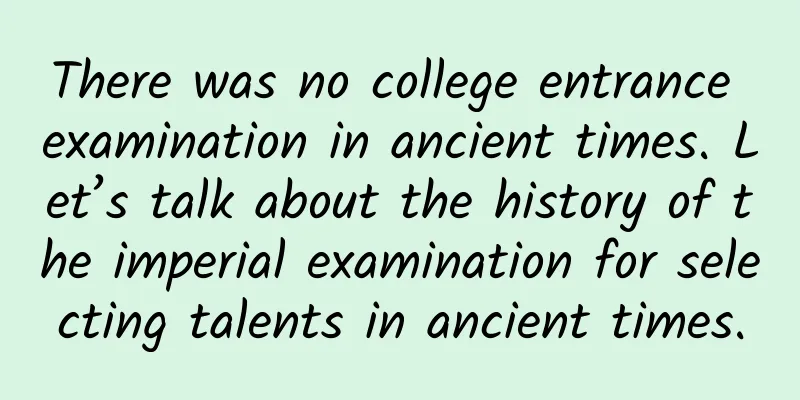Dreaming about Zhongshan: Migrating to the West

|
…In 1937, when the Anti-Japanese War broke out, our institute first moved to Nanyue, Hunan, and moved to Kunming, Yunnan after four months. We arrived in Kunming on April 25, 1938, and set up an office at No. 20, Xiaodongchengjiao. We immediately planned to build an observatory on Fenghuang Mountain in Yangfangao Village in the eastern suburbs of Kunming. Construction began on November 8, 1938, and it was completed in July of the following year. Our institute then moved into the observatory. After the victory in the 34th year, our office was ordered to return to the capital. On May 28th of the following year, we left Kunming and returned to Beijing via Chongqing. On October 1st, we officially resumed work in Beijing. The above passage is excerpted from “Overview of the Institute of Astronomy, Academia Sinica, 1948-1958”. Behind these few words is a difficult journey, not only for the newly established Institute of Astronomy, but also for the entire country. The 26th year of the Republic of China 1937 was a year of great disaster for China, and also a key turning point in China's modern history. On July 7, the Japanese invaders brazenly launched the "Lugouqiao Incident", and the full-scale war of resistance broke out. At the end of July, the Pingjin War of Resistance failed. On July 29 and 30, Beijing and Tianjin were successively occupied by the Japanese army. On August 13, the Battle of Songhu broke out and lasted for three months. On September 11, the Battle of Taiyuan broke out and lasted for nearly two months. On November 8 and 12, Taiyuan and Shanghai fell successively. On December 13, Nanjing, the capital of the National Government, fell... Preparing for Migration Since late July, the situation has become increasingly tense. The Institute of Astronomy has followed the instructions of the Institute and prepared to relocate. The decision principles are as follows: (Sub) Take out all small instruments. (Ugly) The instrument is so heavy that it cannot be transported and its valuable parts (the lens of the equatorial mount) have to be disassembled and packed. (Yin) Most of the astronomical books were packed and shipped out. The items shipped out according to the first principle include solar spectrometers, variable star instruments, flash comparators, Roche microphotometers, stopwatches, wireless receivers, etc. The items shipped out according to the second principle include lenses of the two equatorial mounts, astronomical clocks, etc. (In addition, the parts of the two equatorial mounts and the auxiliary instruments of the large equatorial mounts are temporarily unused, and it is difficult to transport them at a time when Nanjing is about to fall. Jinling University happened to charter a ship, so we asked the university to transport them to Chengdu and borrow them for temporary use.) The items shipped out according to the third principle include 29 boxes of books. “One more day of testing means one more record” At that time, astronomical observations on Purple Mountain were still being carried out, and active preparations were being made for the total solar eclipse that would occur in my country in 1941. Since the solar spectrometer and variable star instrument are small and easy to disassemble, we left them for last disassembly in the belief that "one more day of measurement means one more record". ... The observation ended on July 28. The variable star observation was stopped last. In addition to photographing variable stars, the variable star instrument was also used to photograph novae, comets, galactic nebulae, etc. On the eve of the August 13th Shanghai Anti-Japanese War, the instrument was dismantled. On the night of August 11th, photos of Finsler's Comet were taken as a souvenir. All the photos taken in the past two years were also brought out. In addition to 79 photos of comets, novae, and the Milky Way, there were 207 photos of pure variable stars. Both the observation of the sun and variable stars were international astronomical cooperation at the time. Comet Finsler was discovered by Professor P. Finsler of the University of Zurich, Switzerland, on July 4, 1937. It has a parabolic orbit and is a long-period comet. It was closest to the Earth in early August and was visible to the naked eye near the Big Dipper in the Ursa Major constellation on August 11. It is listed in the list of great comets of the 20th century. Unfortunately, this precious film taken on the night of August 11 is now missing. It is a pity that we have found photos taken abroad at that time for readers. Comet Finsler photographed abroad on August 8, 1937, 5 hours of exposure. | Image source: BAA/TA comet image archive Migration to the West The office location has undergone many changes. Because Purple Mountain had been included in the fortress area, the anti-Japanese war began, and mountaineering traffic was increasingly restricted. So on the morning of August 15, the office was moved to Shangshu Lane in the city. Unexpectedly, Nanjing was attacked by the first air raid in the afternoon of the same day. The bombs fell nearby, and the houses were deeply shaken, so it was moved to Jiangjun Lane. On August 27, Nanjing was attacked at night again. Two bombs fell in the courtyard, and more than half of the house collapsed. Three workers died. Staff member Yang was injured. So the next day, the office was moved to Chibi Road (Yu Qingsong's home). At the same time, in addition to some staff members who stayed in Beijing, some staff members were sent to Nanyue with other institutes in the academy, and some staff members were evacuated at this time. At the end of December, the situation in Nanjing became increasingly tense, and the staff members who stayed in Beijing also went to Hunan one after another. On December 28, it moved from Nanyue to Guilin, Guangxi. On April 18, the 27th year, it left Guangxi and moved to Kunming, Yunnan on the 25th. According to the deployment of the Academia Sinica at that time, the Institute of Astronomy and four other institutes, including the Institute of History and Language, the Institute of Engineering, and the Institute of Chemistry, were transferred to Kunming via Hunan. On August 23, 1937, the Institute of Astronomy sent an advance team to Wuhan by ship with Western books and variable star instruments, solar spectrometers, and timing instruments, and then transferred to Changsha, and later moved to the Nanyue Hengshan Temple. Director Yu Qingsong and others who stayed in Nanjing worked in the city and persisted until December before retreating to Changsha, and then also moved to the Nanyue Temple. After the Institute of Astronomy reunited, it withdrew to Guilin with other institutes and stayed in Guilin for about half a year. In the spring of 1938, it transferred to Yunnan via Vietnam and finally arrived in Kunming on April 25. Phoenix Mountain Observatory The astronomical research institute is based on observation. Except for the autumn and winter seasons, the weather in Nanjing is often cloudy and rainy, and there are few opportunities for observation throughout the year. Therefore, the institute has long had plans to set up a branch station. During the relocation to Hunan, Guangxi and Yunnan, the weather and locations along the way were not suitable. After moving to Yunnan, I learned that the weather in Kunming is particularly good, the ground is high and the air is thin, the stars are bright, and except for the rainy season, there are mostly sunny days, which is indeed suitable for astronomical observation. Therefore, in the past six months, the construction of the branch station has been the focus. We have searched for suitable locations in the suburbs and successively selected Heilongtan, Taihua Mountain and Fenghuang Mountain. The terrain of the three places has been surveyed and mapped. Finally, it was decided to choose Fenghuang Mountain, the address is the public land in Wang Village, Dayangfang. A contract was signed with the village representative to lease it for 20 years (the lease can be renewed after the lease expires). Director Xuan Youyu personally designed the drawings of the branch station and staff dormitories, and commissioned Lu Genji Construction Factory to build them. Phoenix Mountain Observatory (Photo taken by Joseph Needham on September 2, 1944, provided by Yunnan Observatory) The construction of Phoenix Mountain Observatory officially started on November 8, 1938 and was completed in the spring of 1939. Phoenix Mountain Observatory is not large in scale, with only three brick-walled bungalows, which are used as the headquarters (office, variable star room, solar spectrometer room, library, reception room, etc.), staff dormitory and logistics room. The building was designed by Director Yu Qingsong himself. This is the second observatory he designed and organized to build after the Purple Gold Observatory after an interval of 8 years. A tile with the words "Institute of Astronomy" at the Phoenix Mountain Observatory (provided by Yunnan Observatory) The instruments brought from Nanjing were also installed one after another. Only two of them were working at that time: the Haier solar spectroscope and the Roche variable star camera. In May 1939, astronomical observations, which had been interrupted for nearly two years, were partially resumed at the newly built Phoenix Mountain Observatory, and relevant international cooperative research continued. The Rothschild variable star camera installed at the Phoenix Mountain Observatory (provided by Yunnan Observatory) From arriving in Kunming on April 25, 1938 to leaving Kunming on May 28, 1946, the Institute of Astronomy lasted a total of eight years in Kunming. The war disrupted the steady development of science and technology, but it strengthened scientists' belief in saving the country through science. The westward migration was to preserve the spark of science, complete the unfinished scientific cause, and sow new sparks. Rotating Editor-in-Chief: Du Fujun Editor: Wang Kechao |
Recommend
【Xiaosheng】cos post-production collection【HD quality with some materials】
Network disk directory Advanced Synthesis Class m...
Website advertising keywords decline and solutions!
Most of the friends who have websites are individ...
Website was sued for buying and selling WeChat accounts! The court ruled: Tencent was awarded 1.09 million yuan in compensation
On October 21, it was learned from the Nanjing Tr...
Why deploy influencer marketing?
Although it seems that the term " influencer...
The biggest lie I've believed in over 20 years: Drinking warms the body
I heard that the setting sun is a signal to drink...
One article to understand the construction of community operation system
This article uses the 5w1h analysis method to int...
To wash or not to wash? That is the question!
Editor: Guru...
How to improve product conversion rate? A few tips!
Whether it is online e-commerce or offline stores...
The 10 most disappointing founders of 2015
[[161252]] Editor's note: In this article, St...
How to do marketing promotion on Zhihu?
The way Zhihu is presented to us is through artic...
What is different about the Honor 7, other than just fingerprint recognition and all-metal?
The rapid development of domestic smartphones has...
Can you make sales on Douyin explode? Use this formula!
I saw a TikTok video a few days ago. It showed st...
Win8 is officially retired! Return to Win7 or upgrade to Win10?
In recent days, when searching for "Microsof...
Can vegetables grow like trees?
From vast fields to modern greenhouses, from trad...
Practical traffic diversion skills for Douyin (Part 1)
In order to help you learn the course better, tod...









